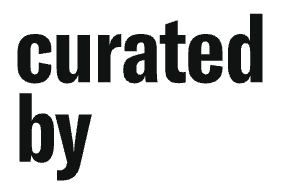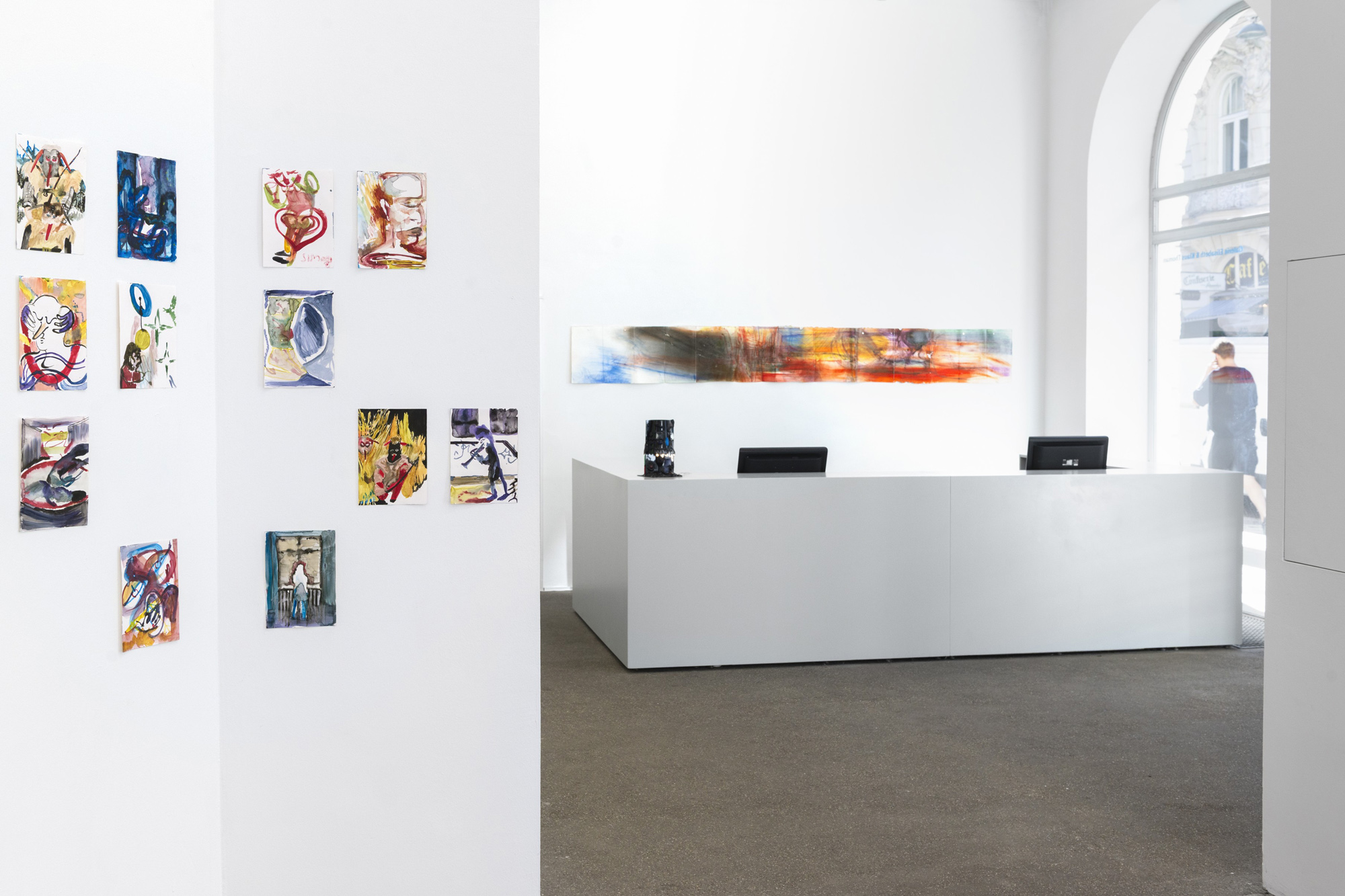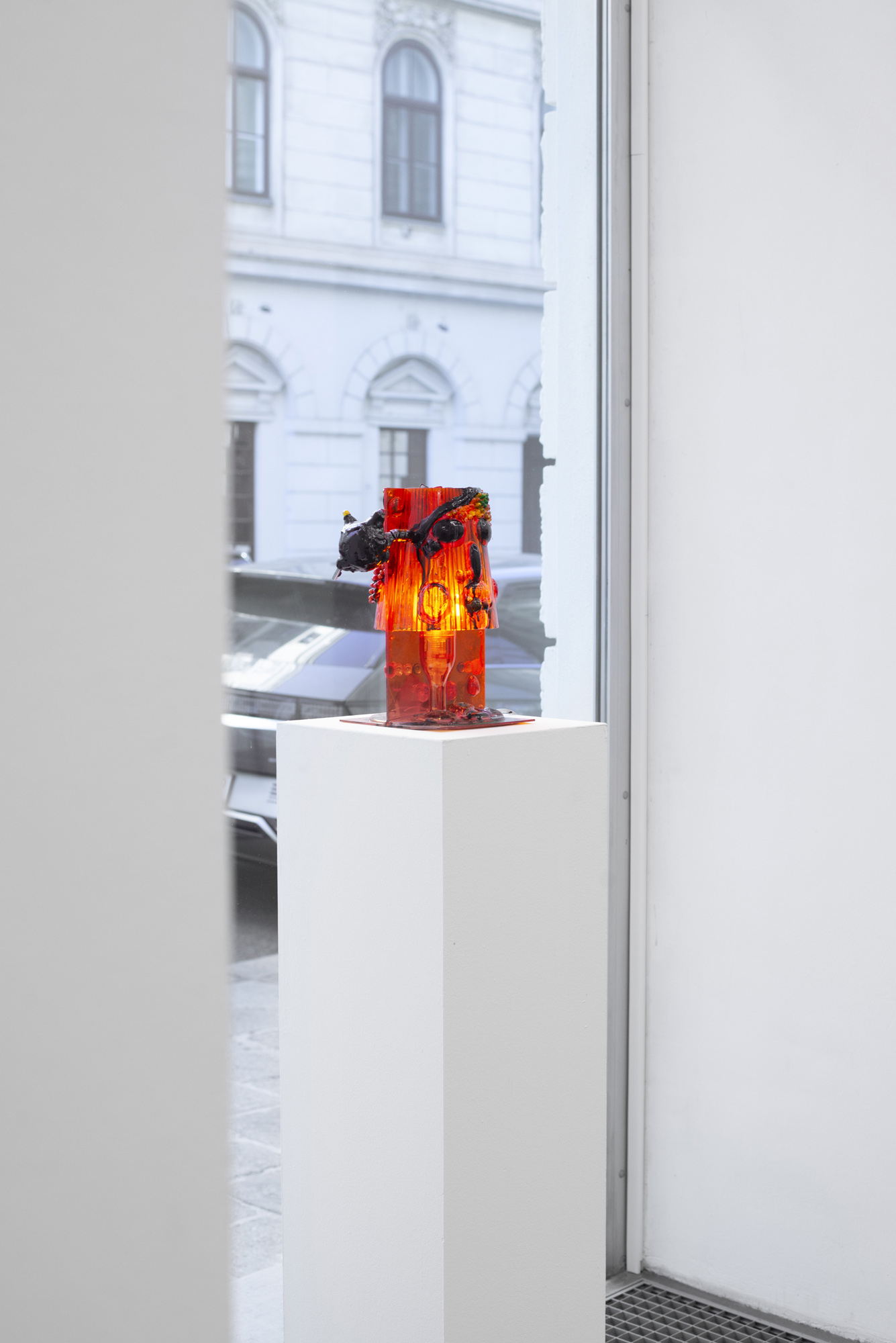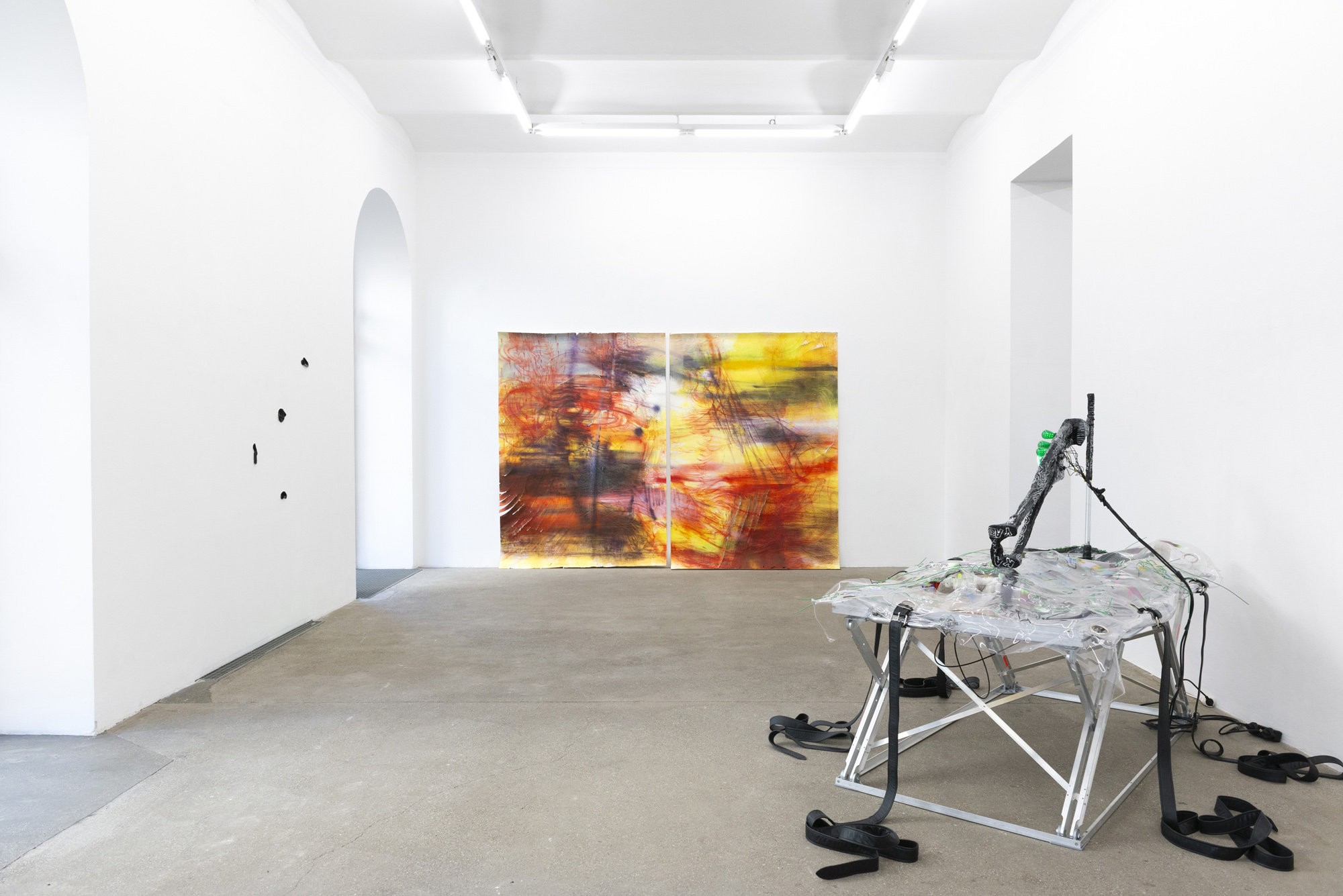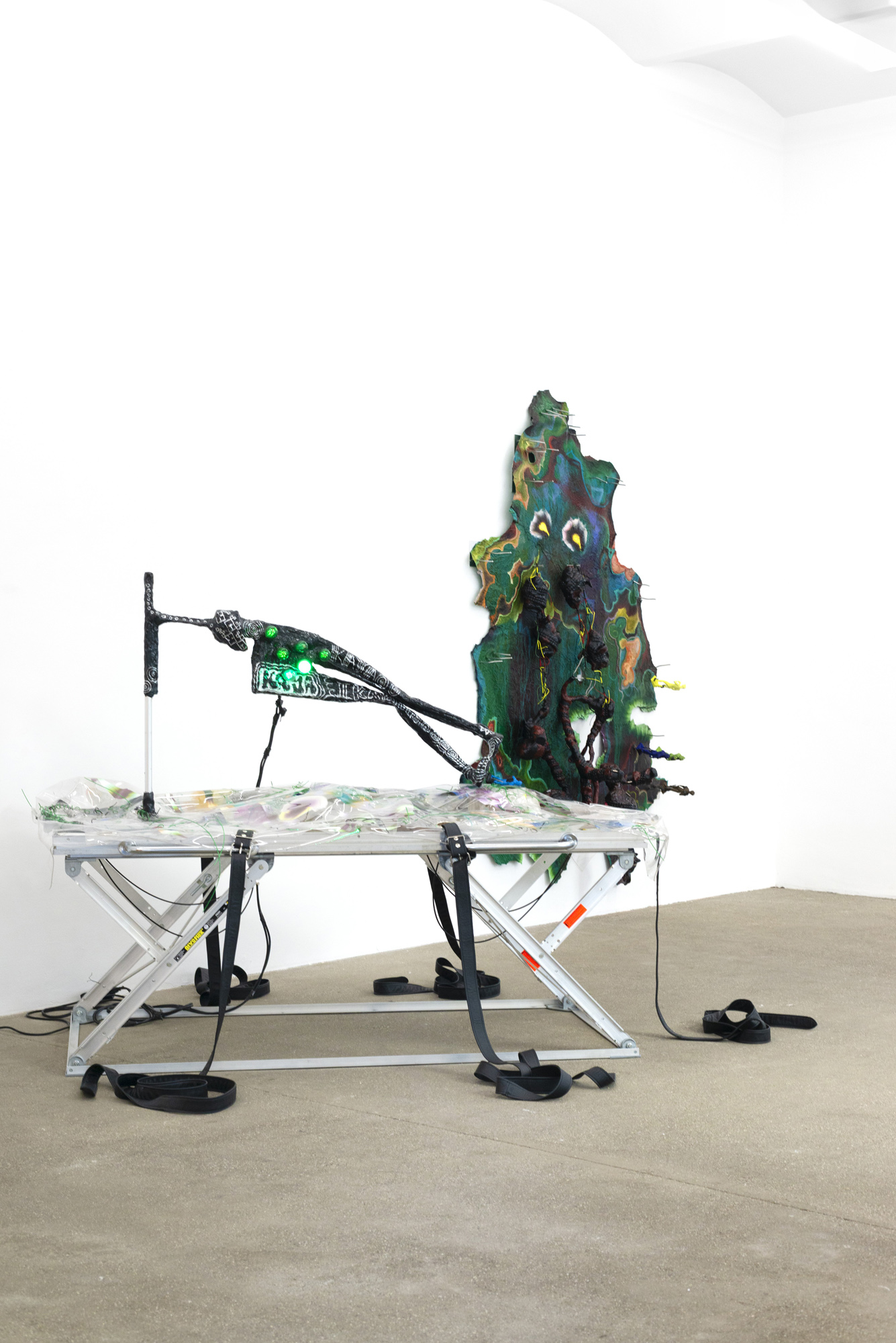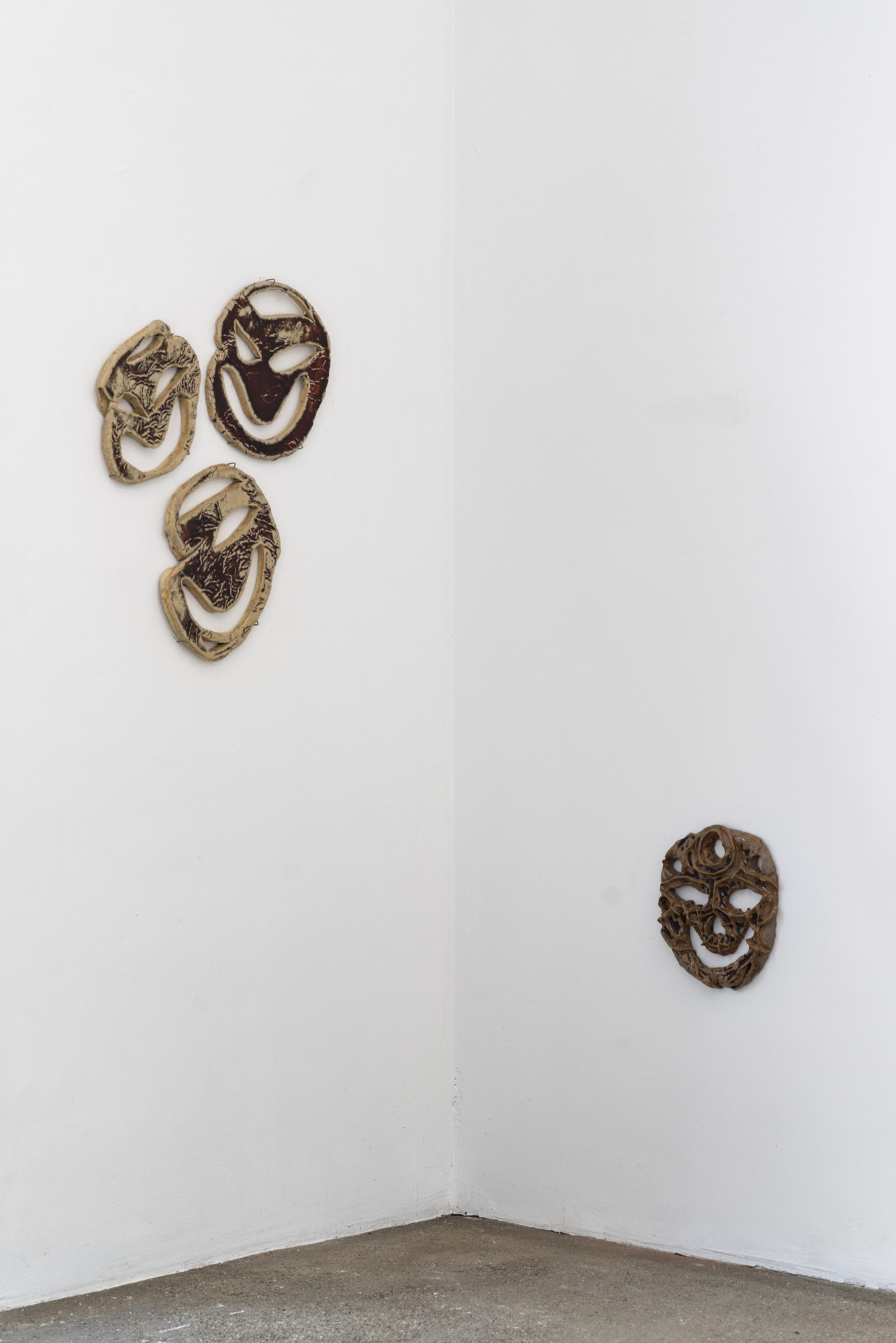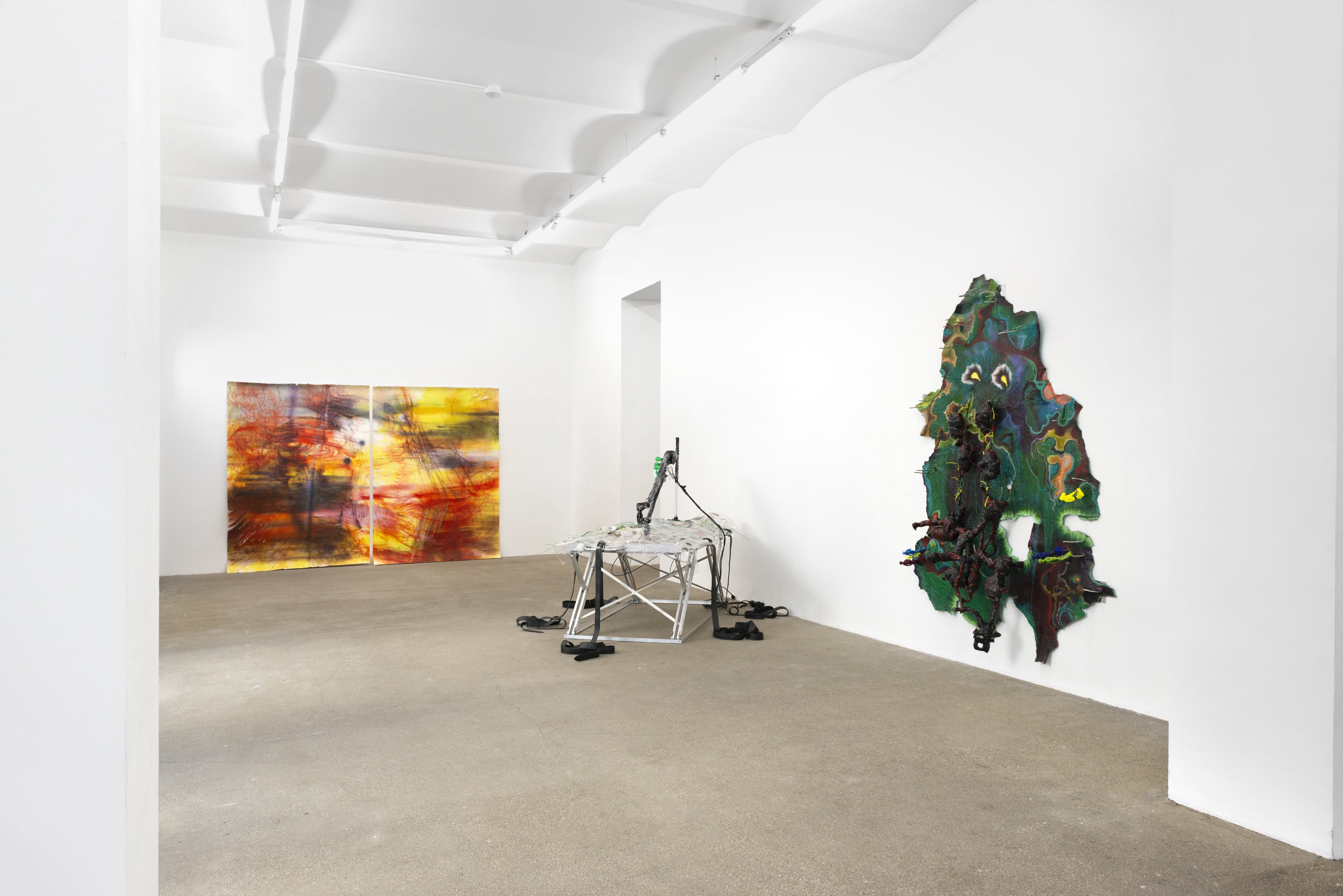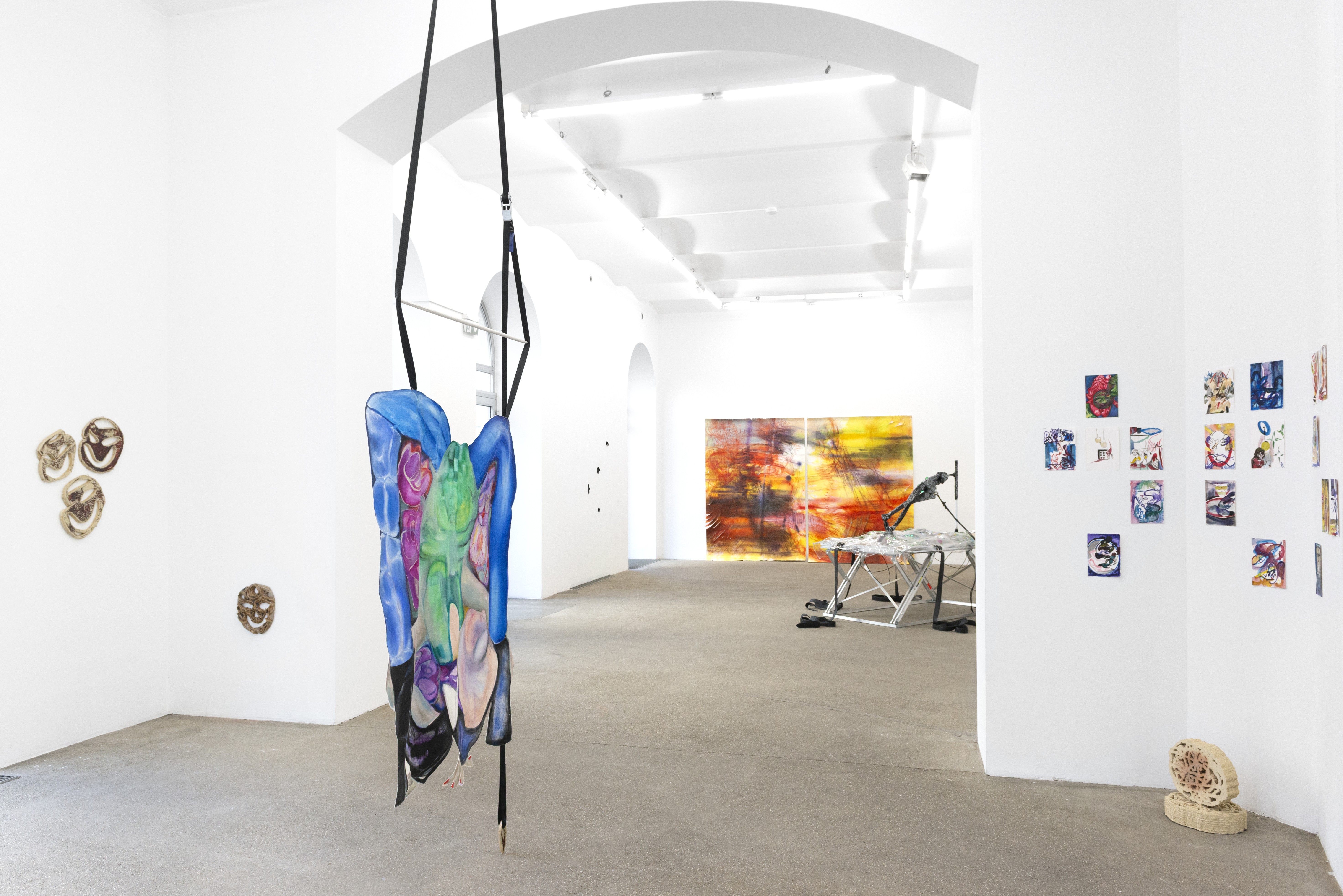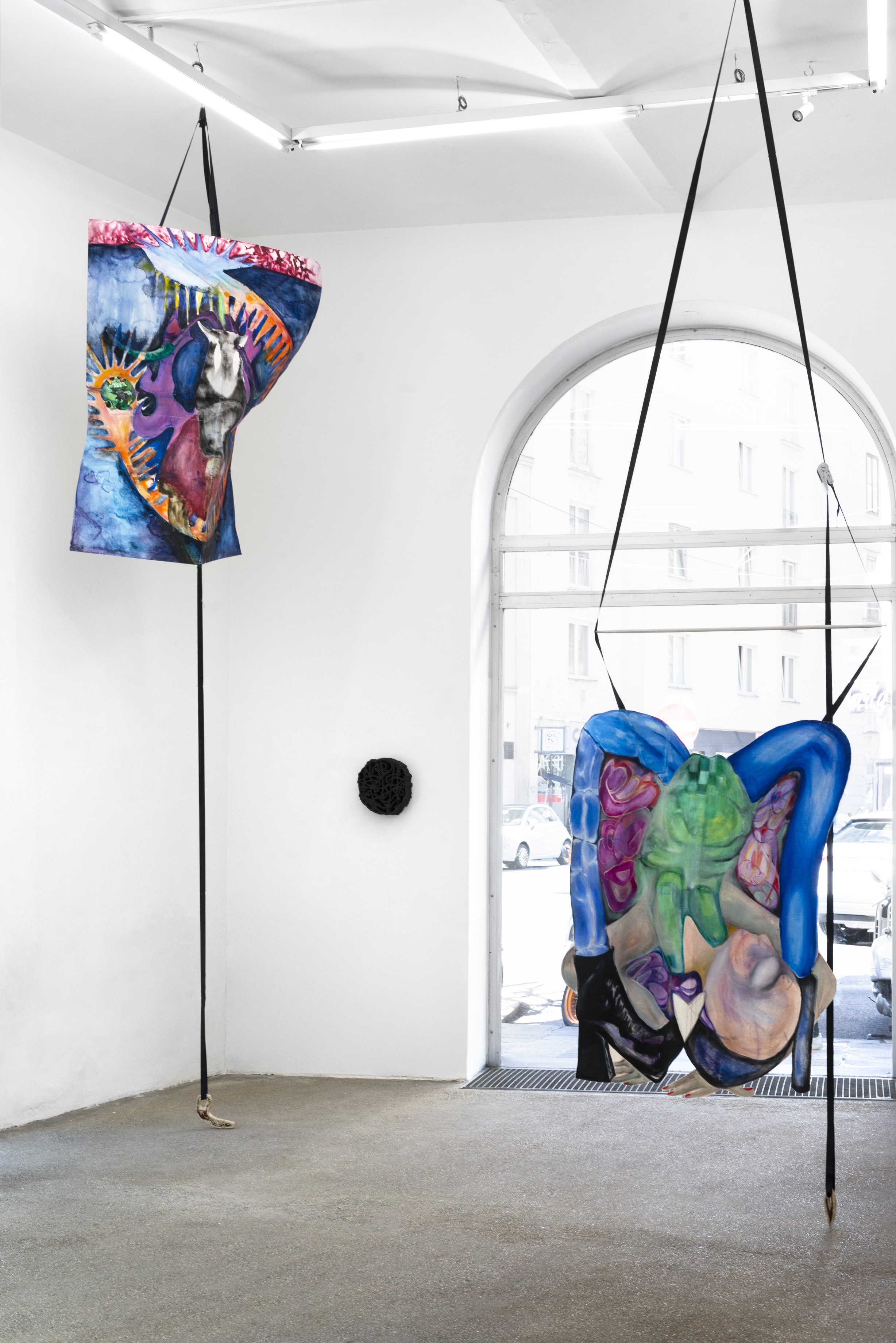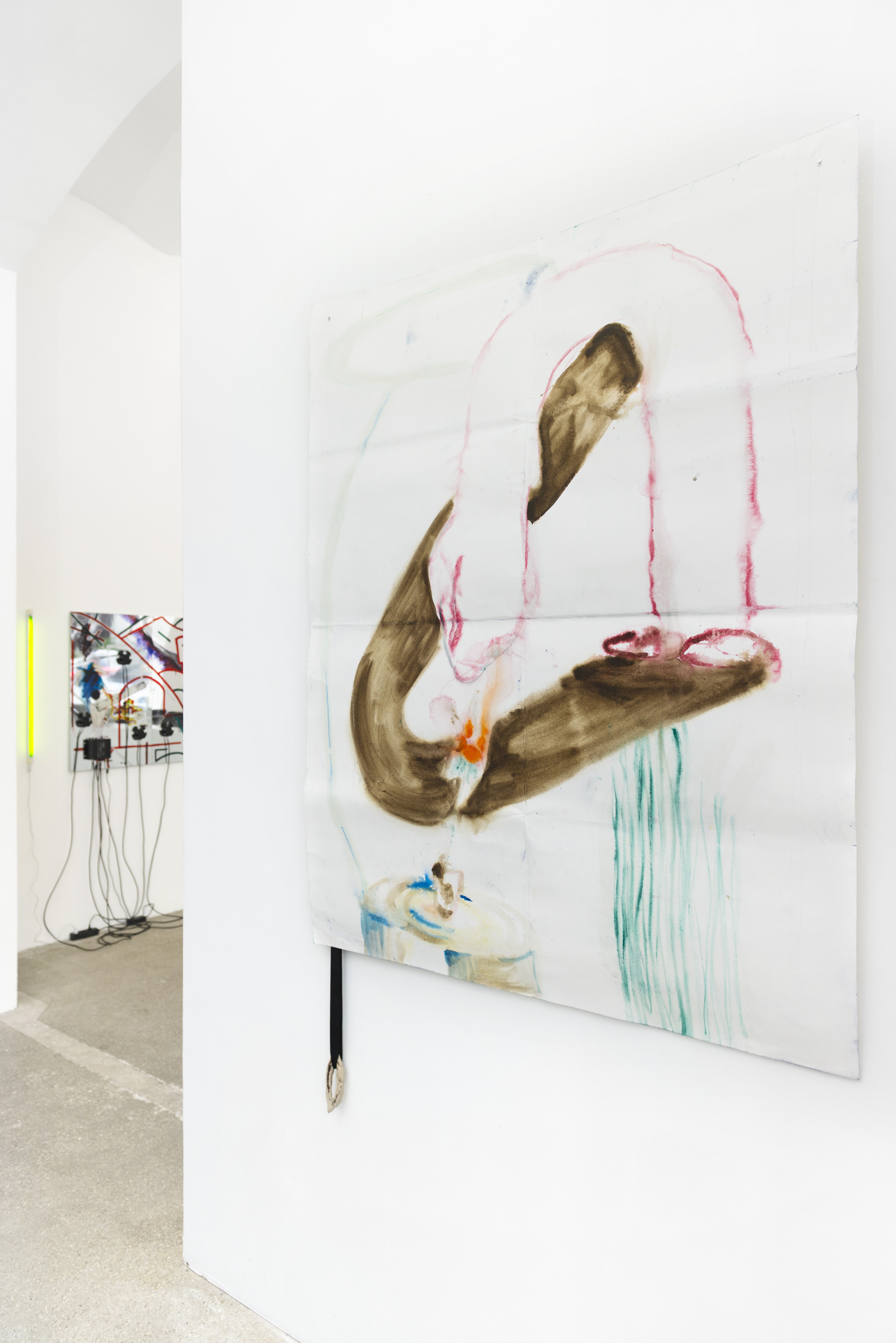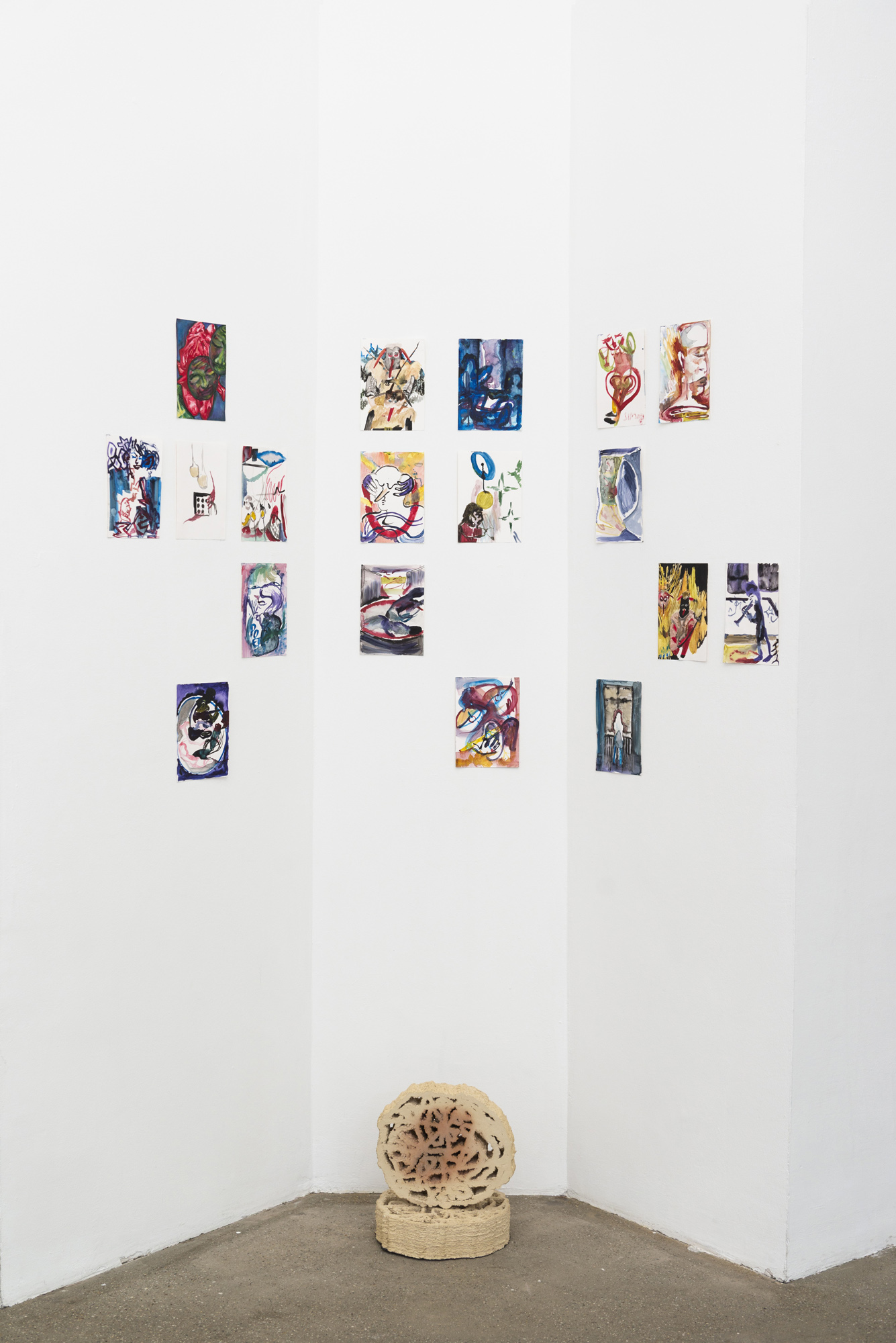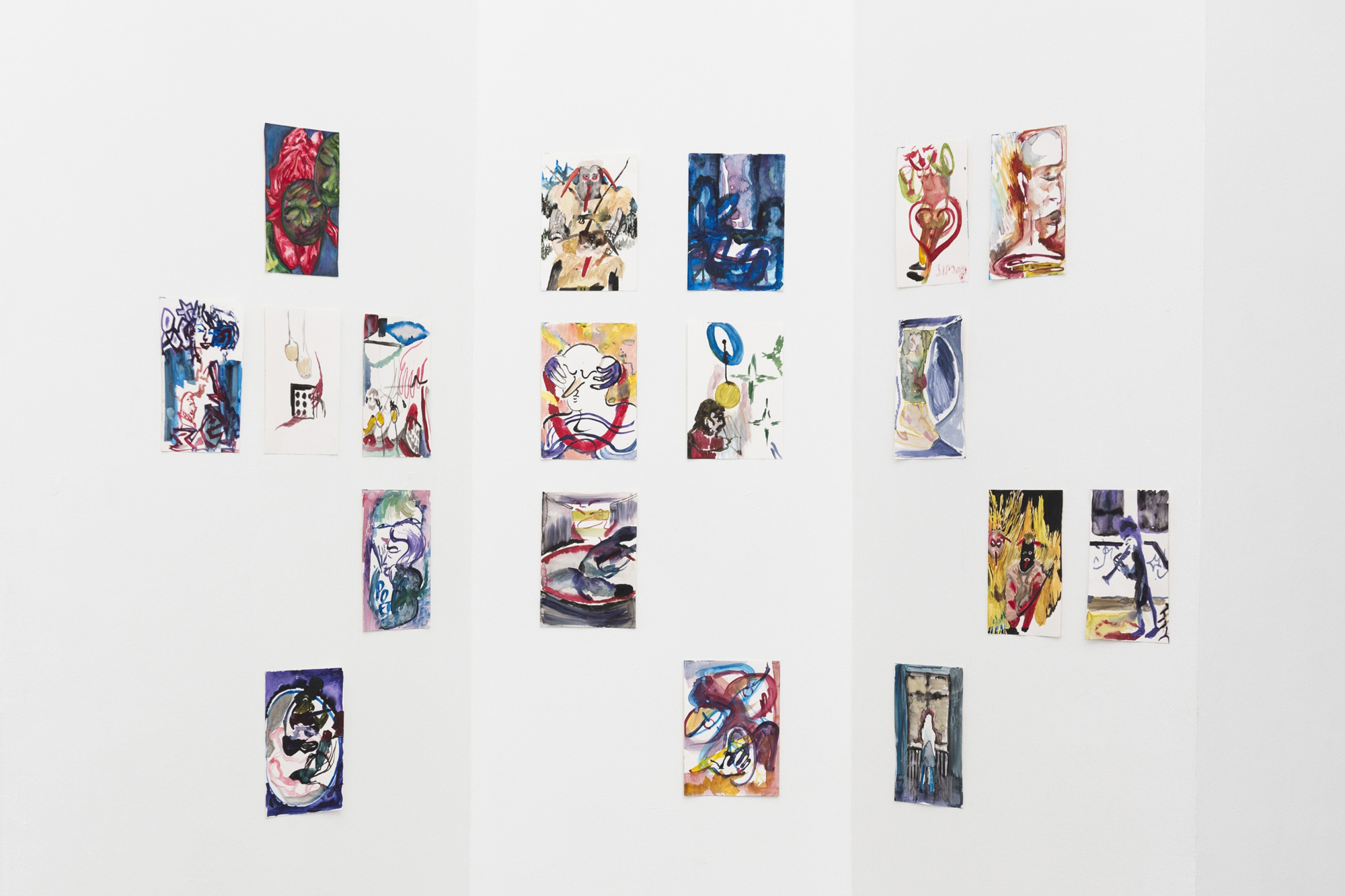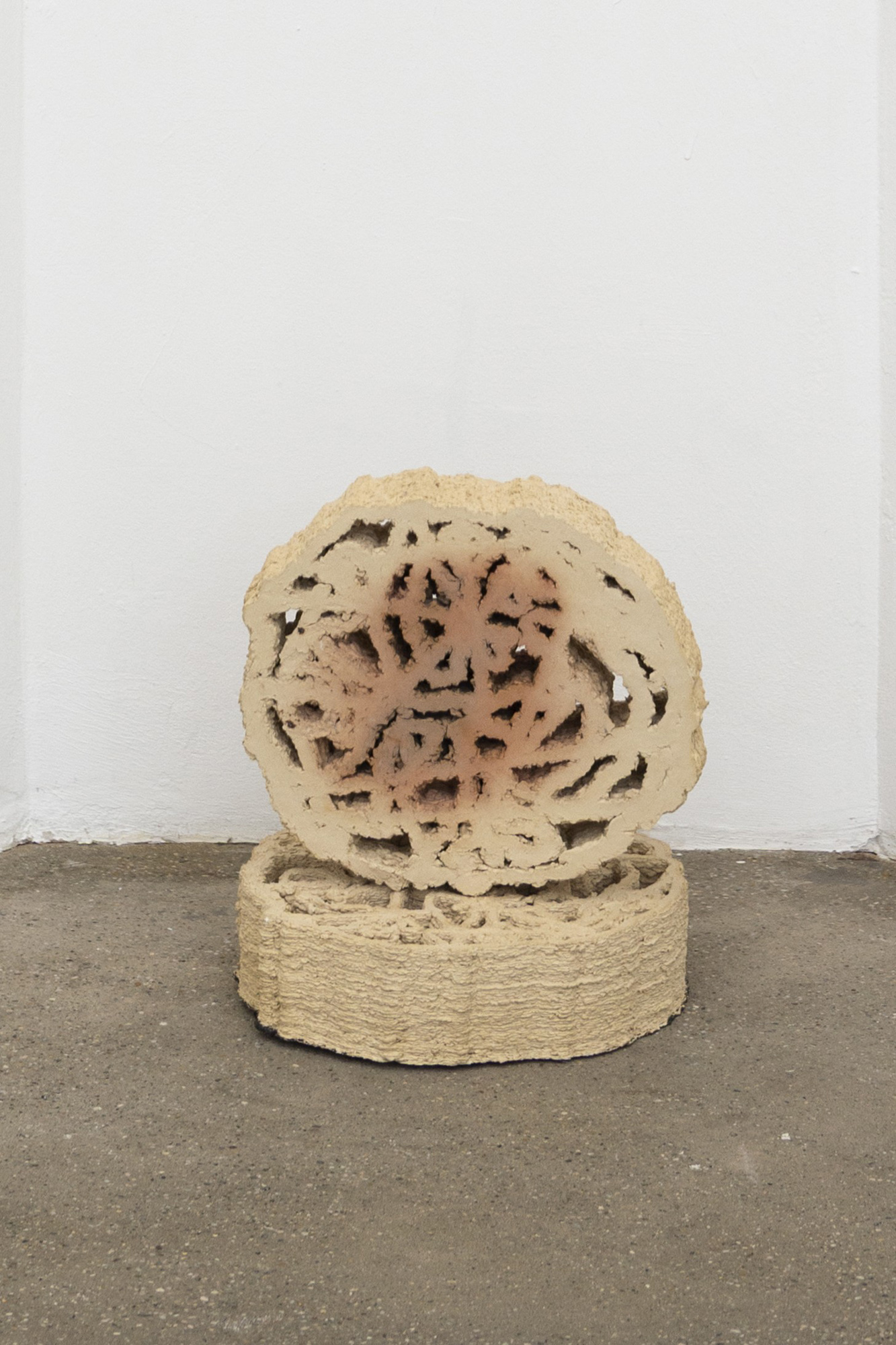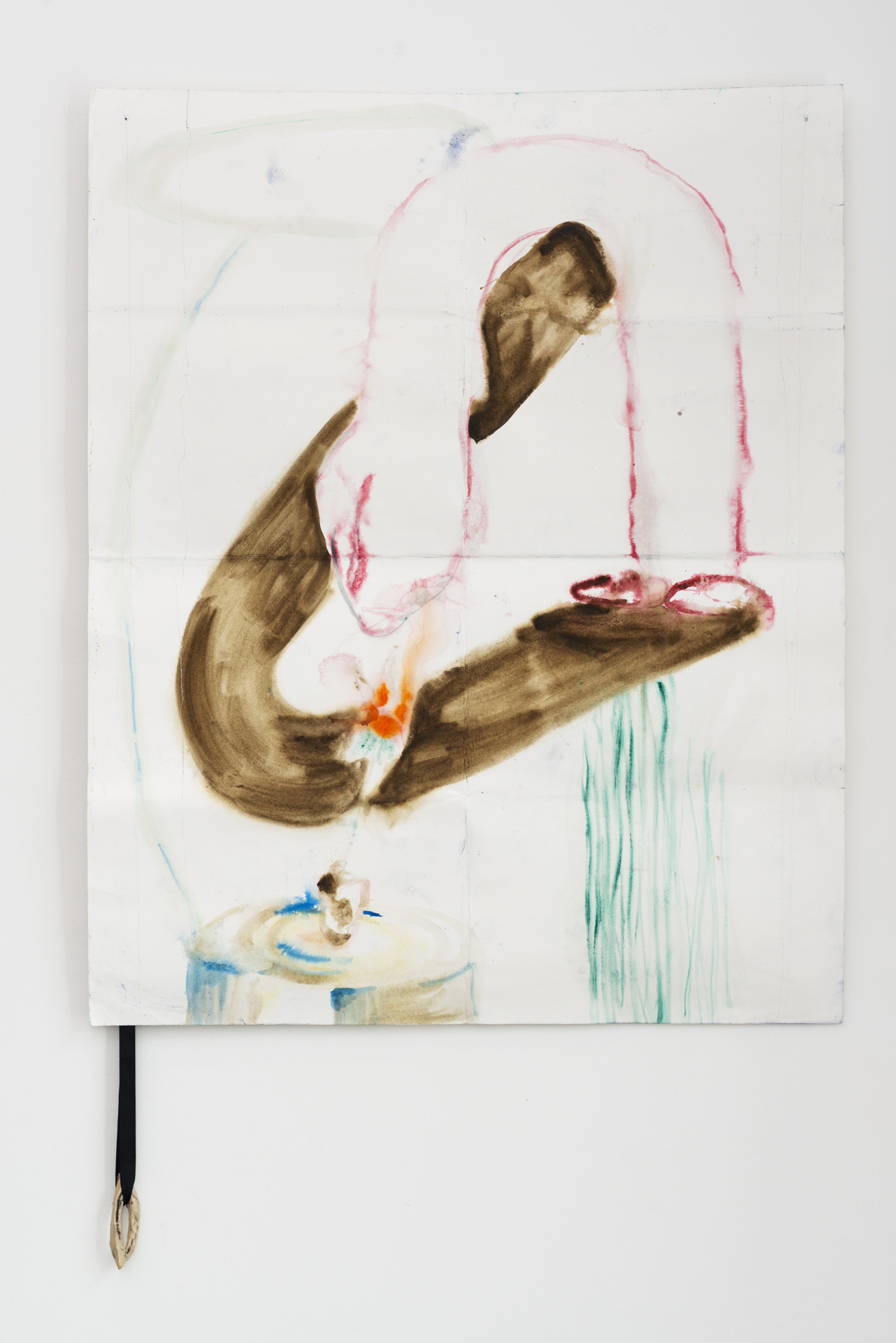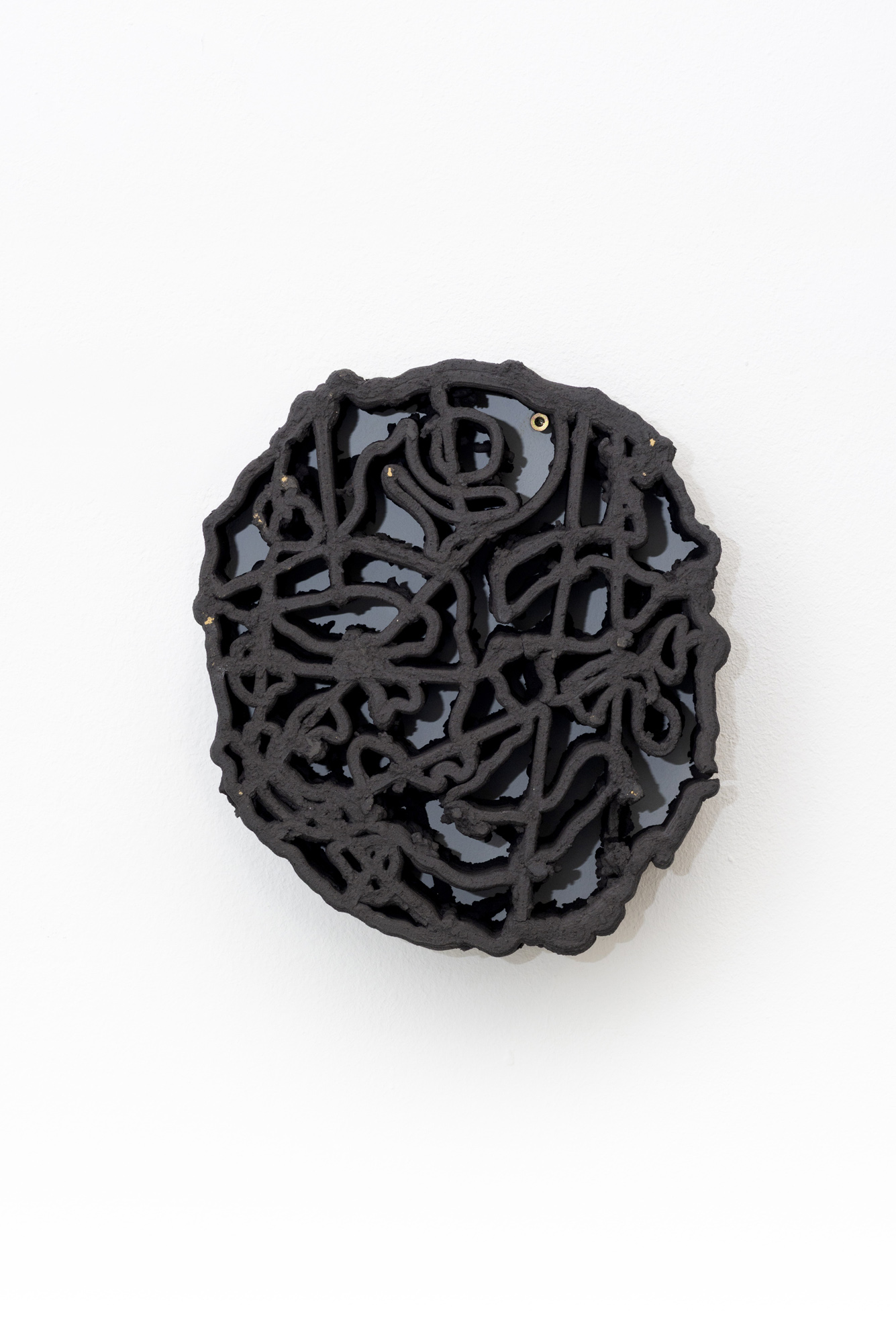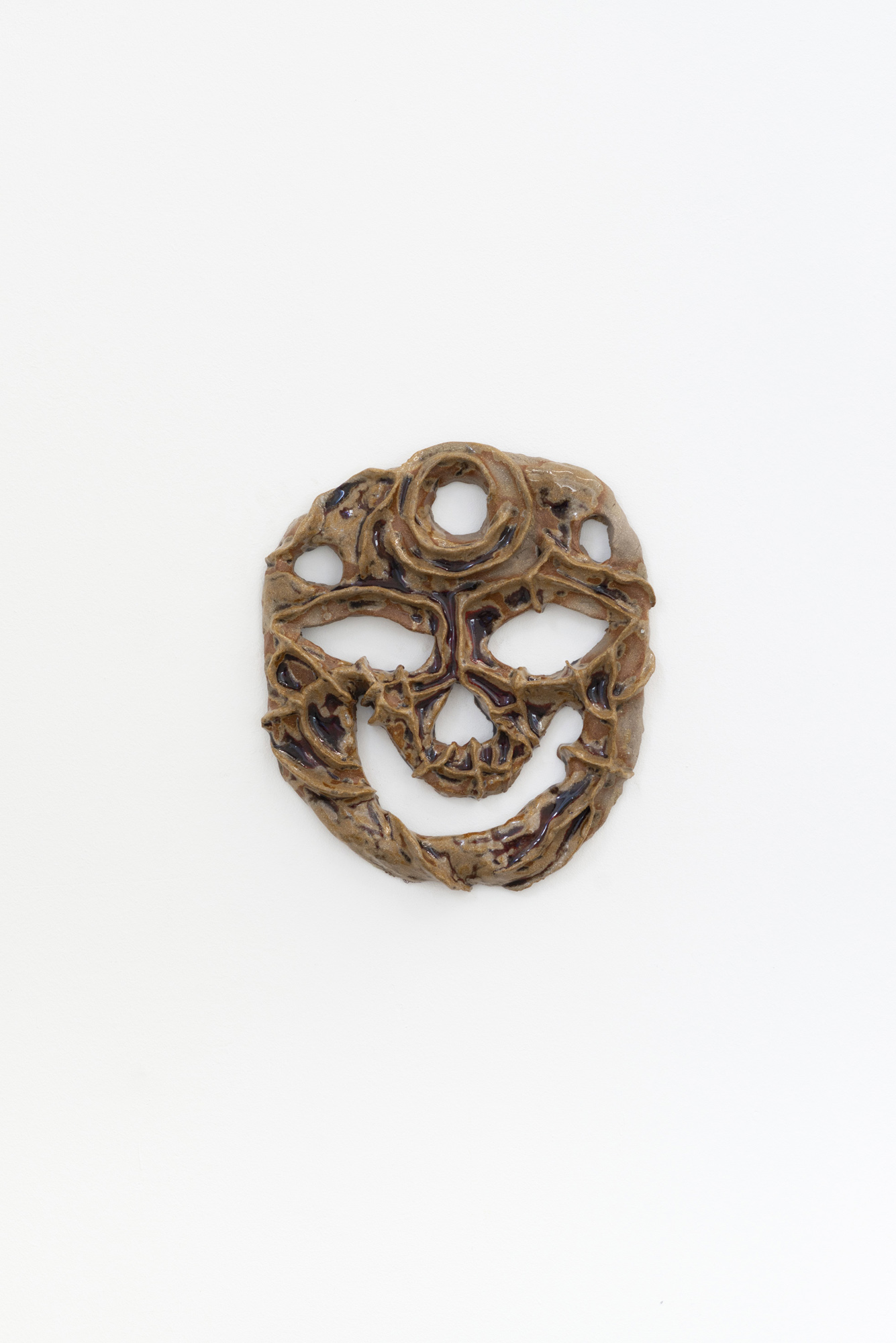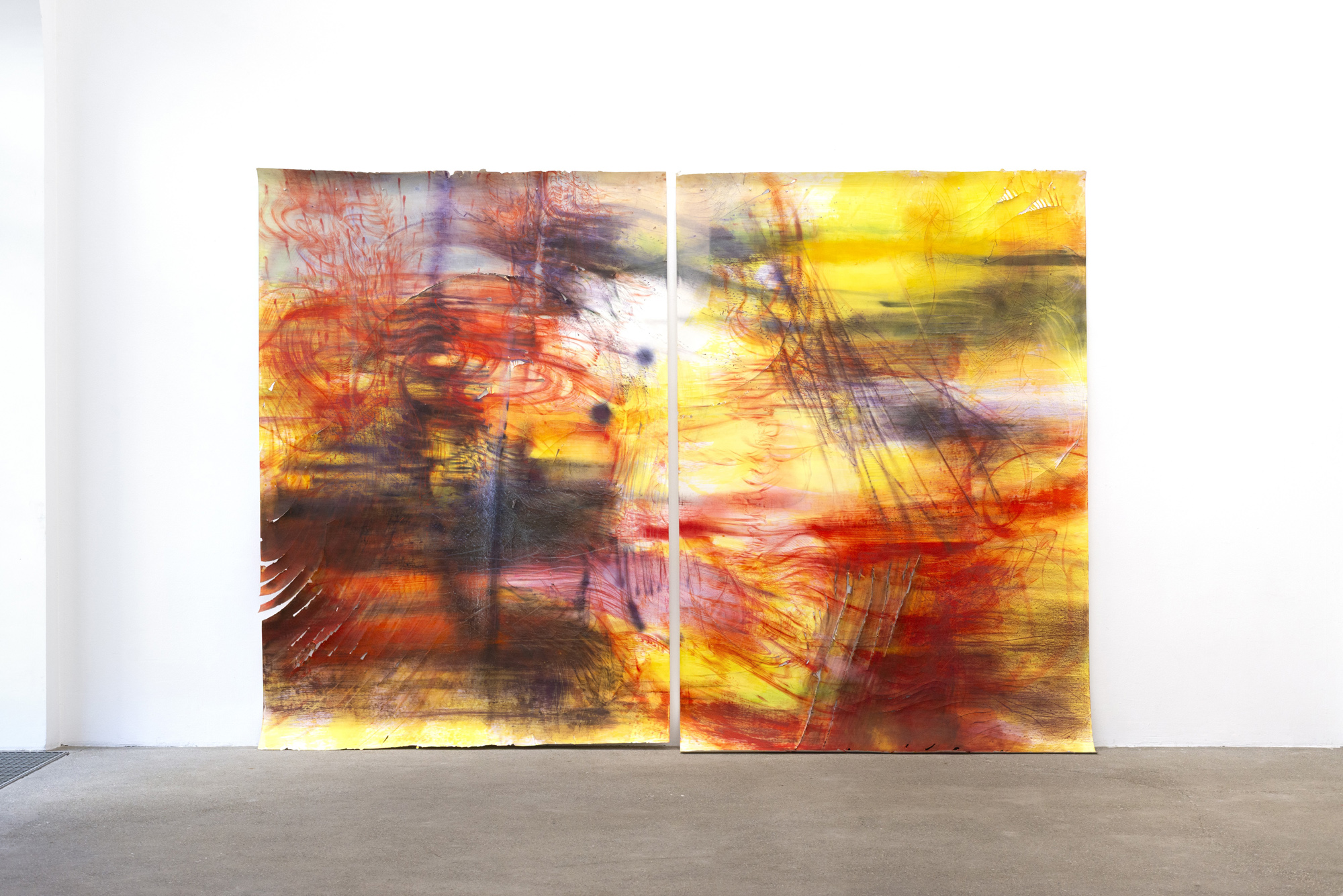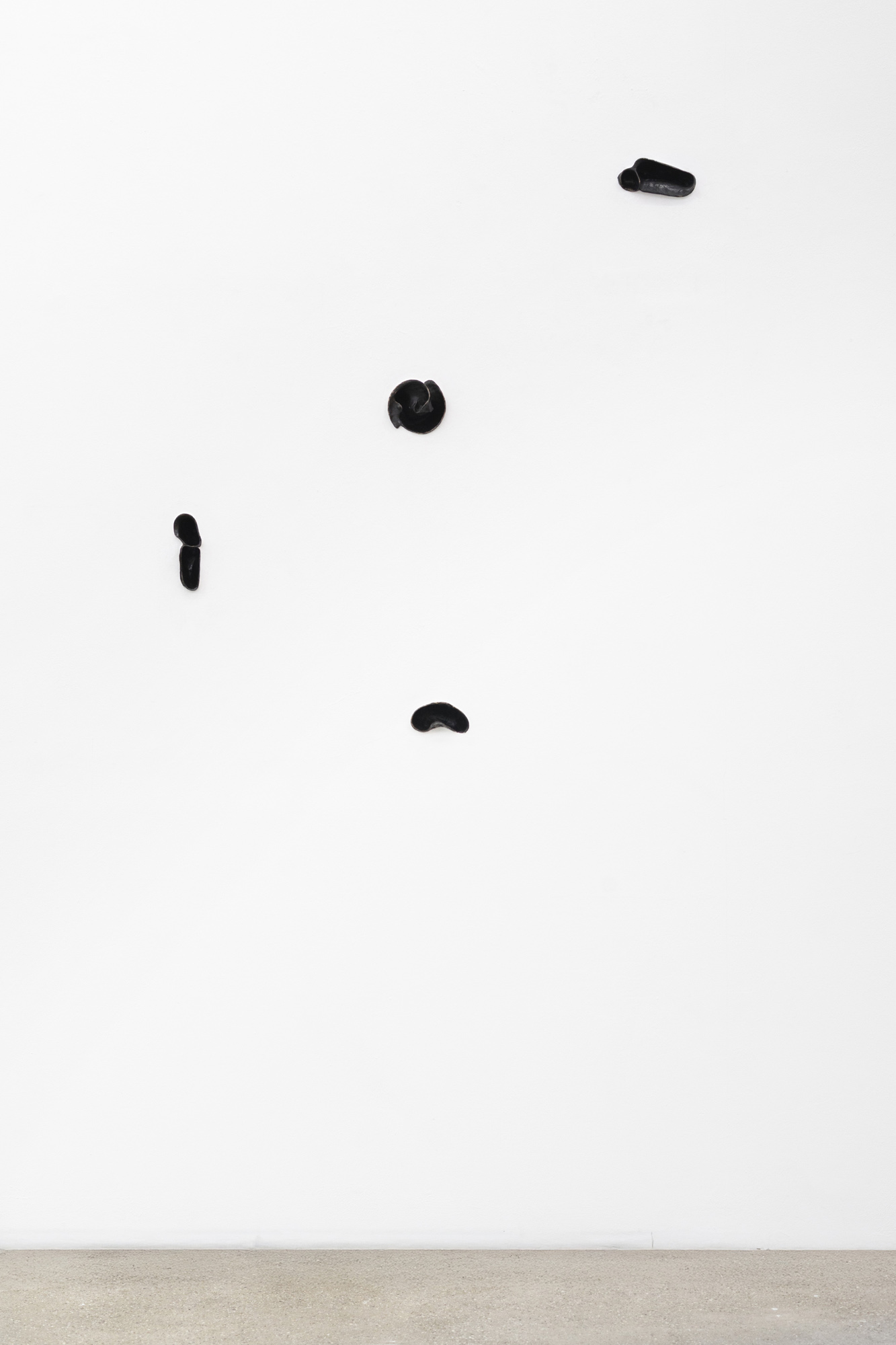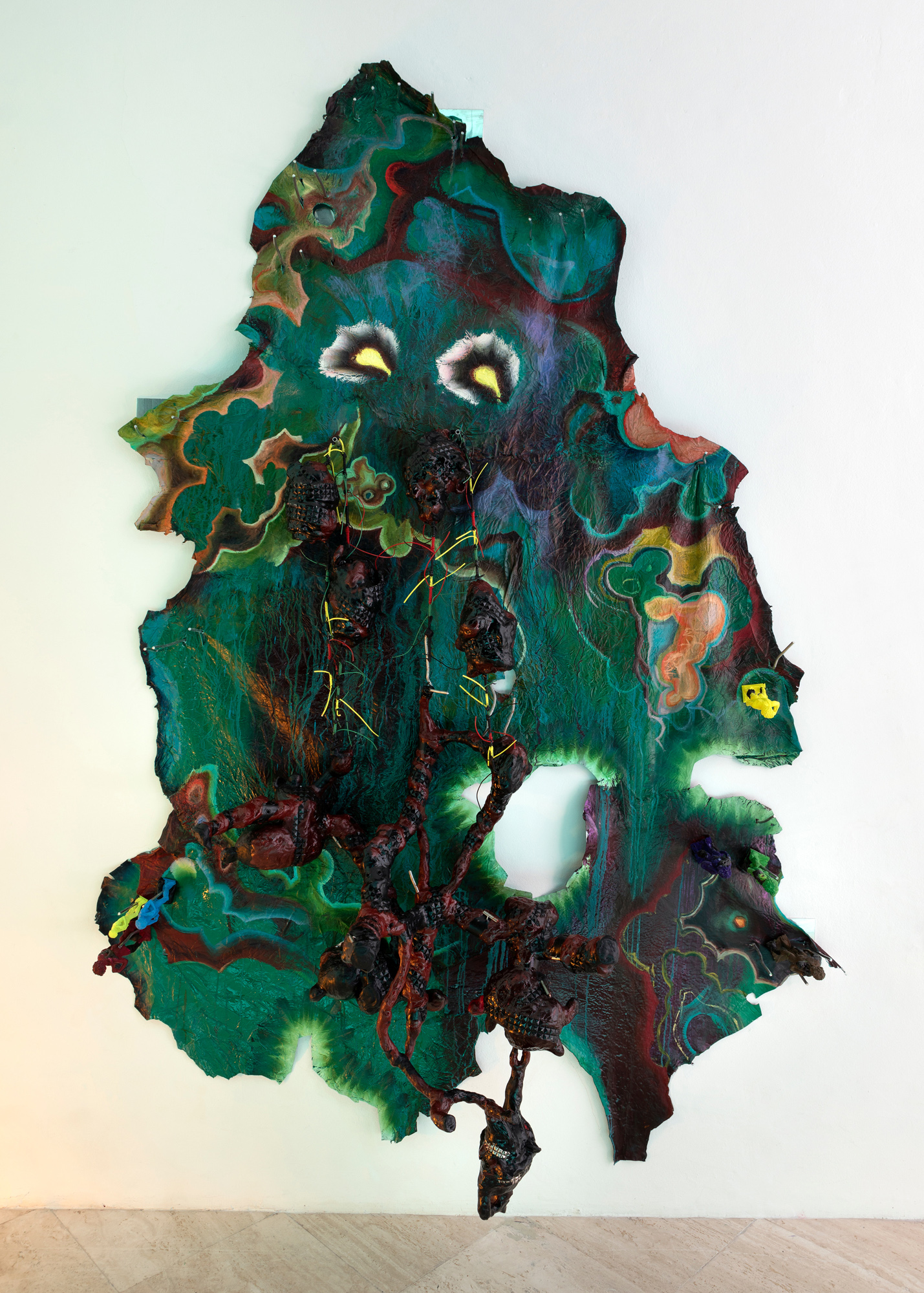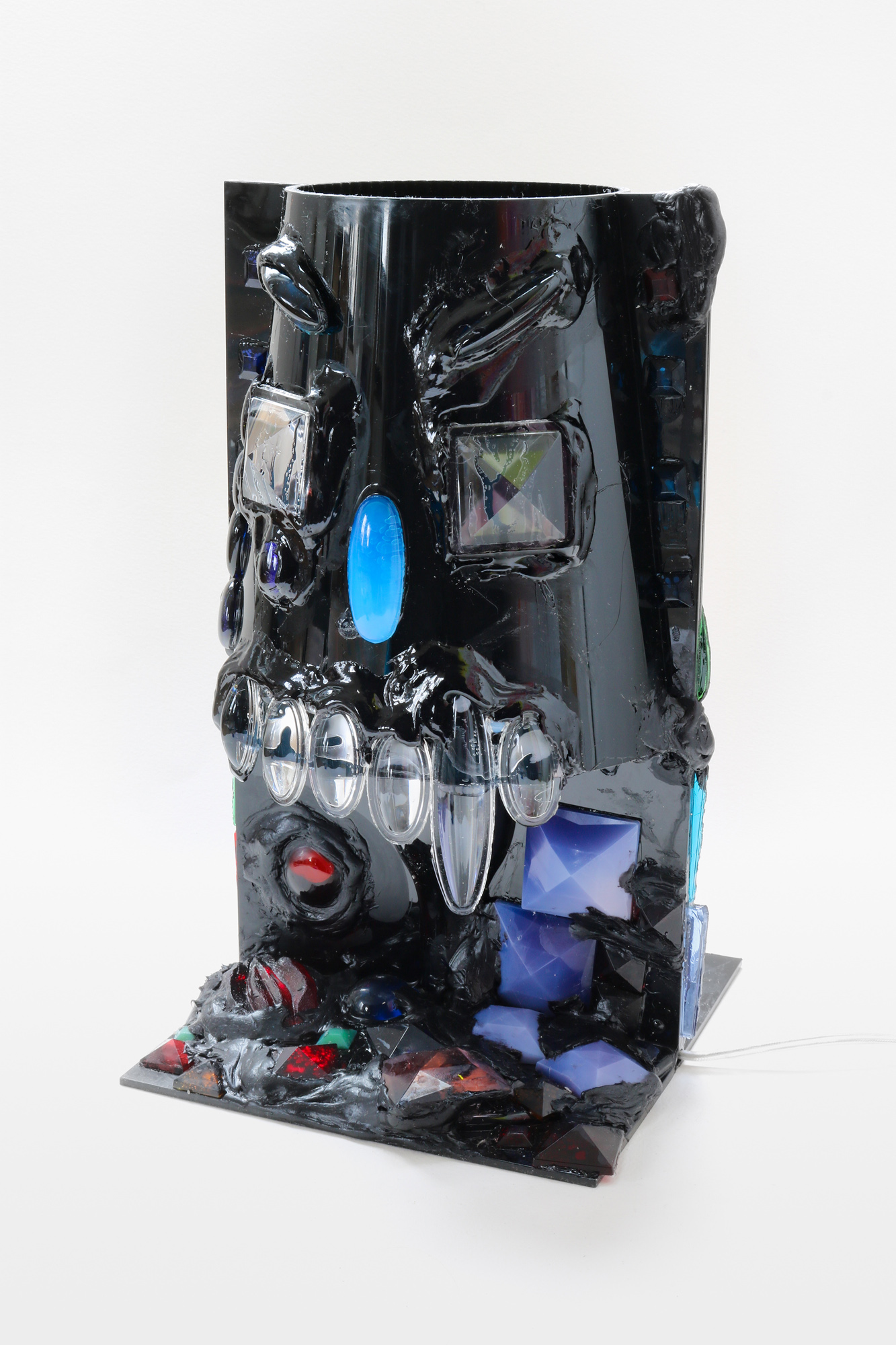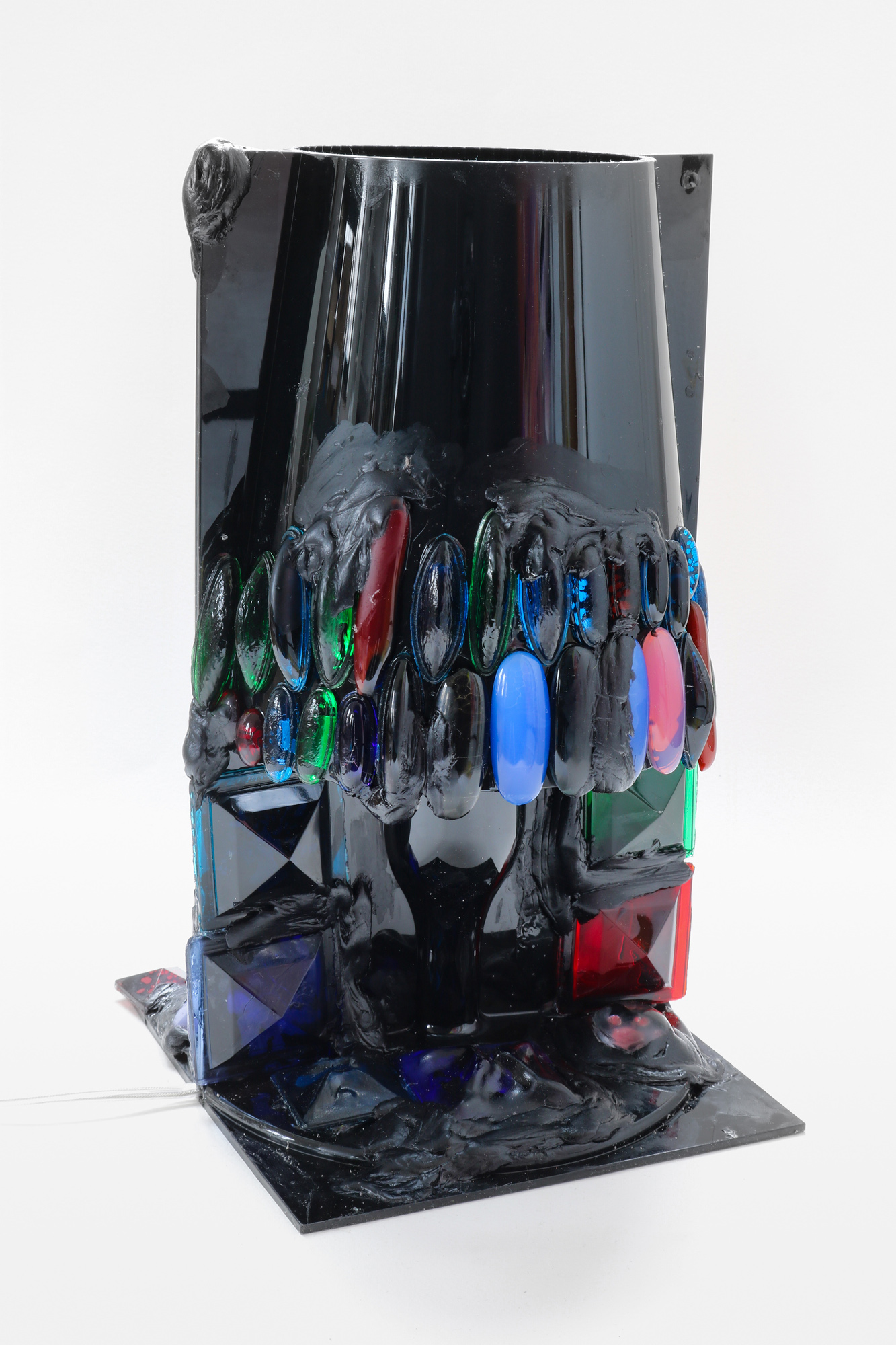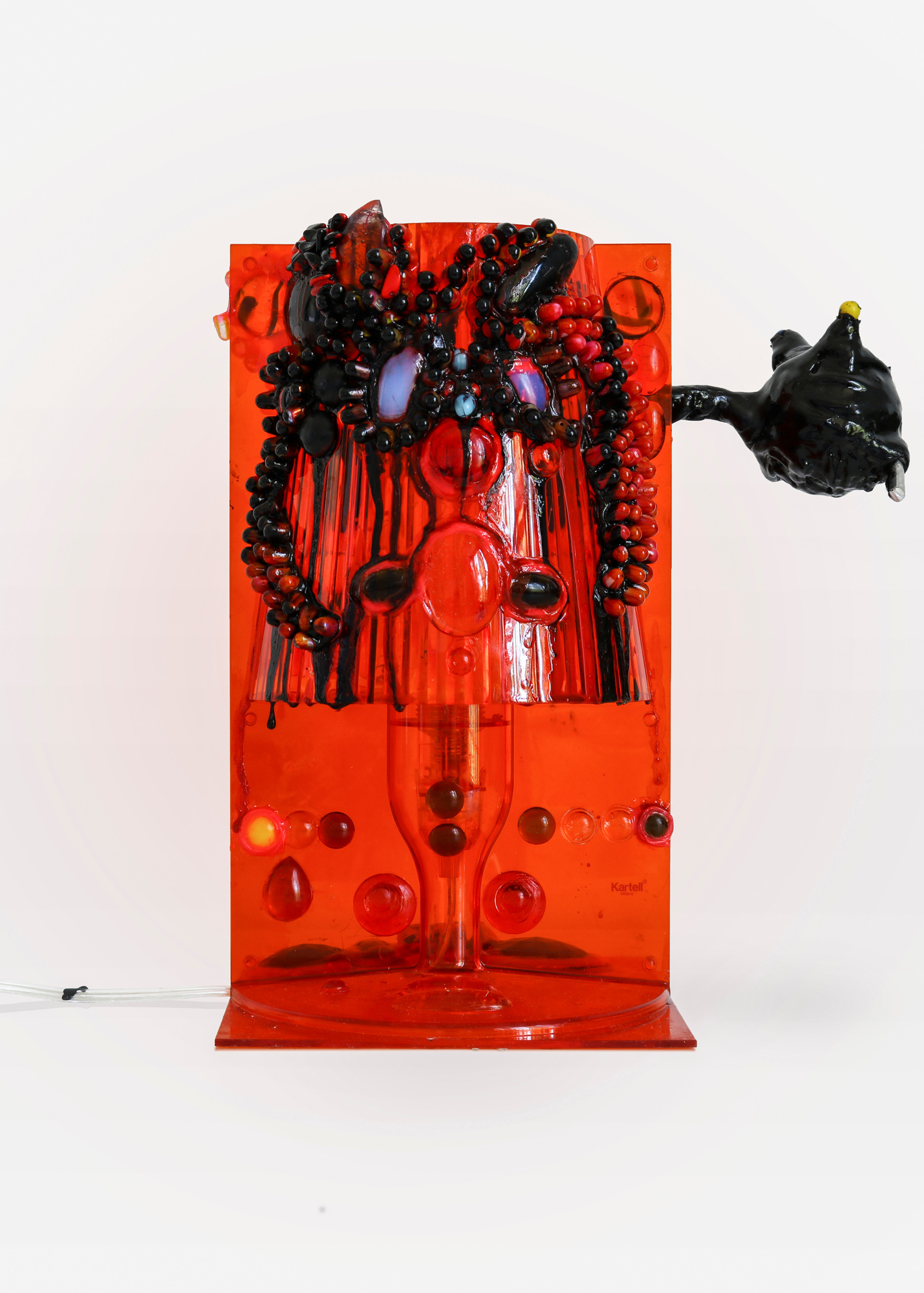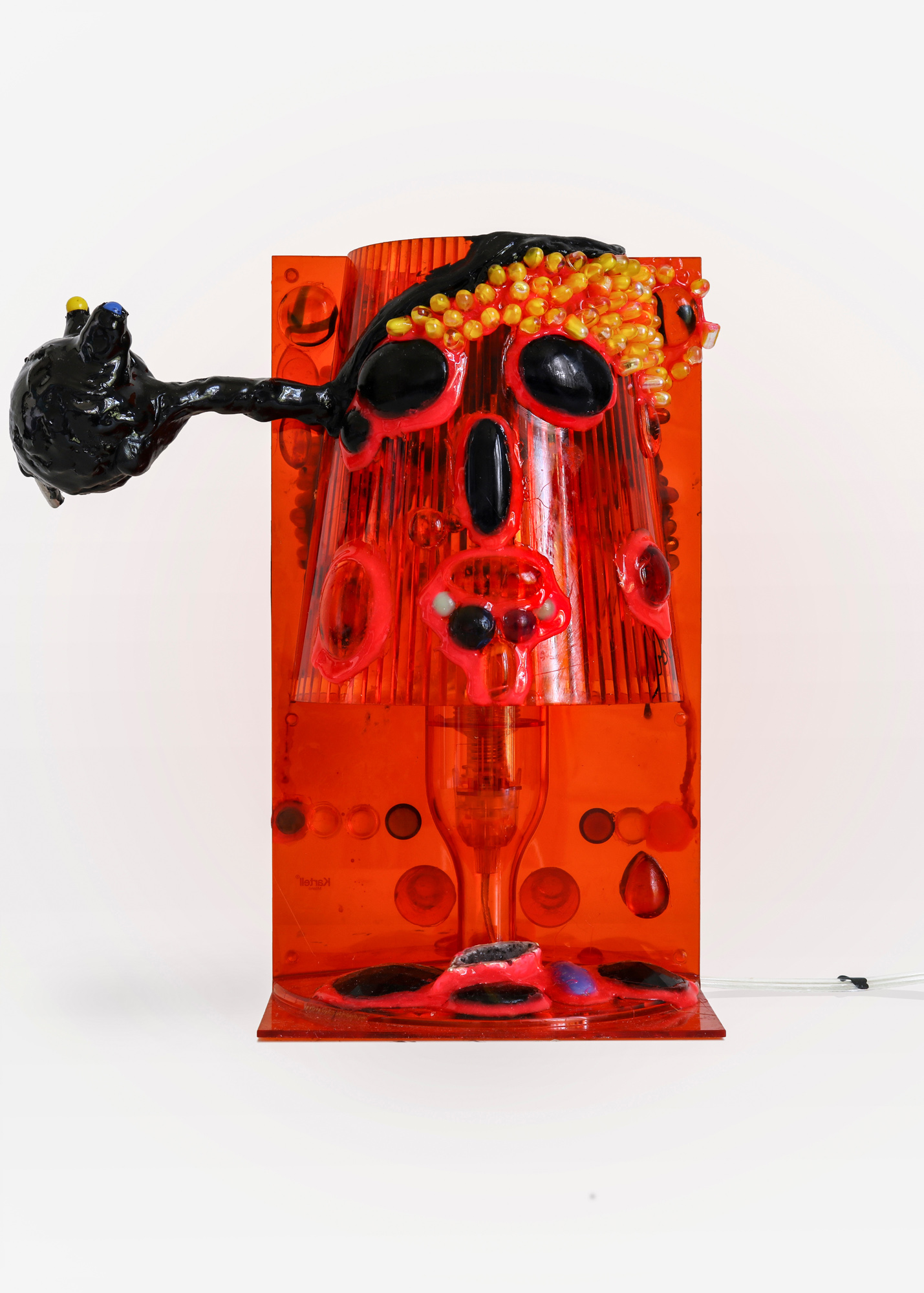Galerie Elisabeth & Klaus Thoman curated by Monika Bayer-Wermuth
„And When I See a Ghost I Really See a Ghost“

www.galeriethoman.com
Curator(s):

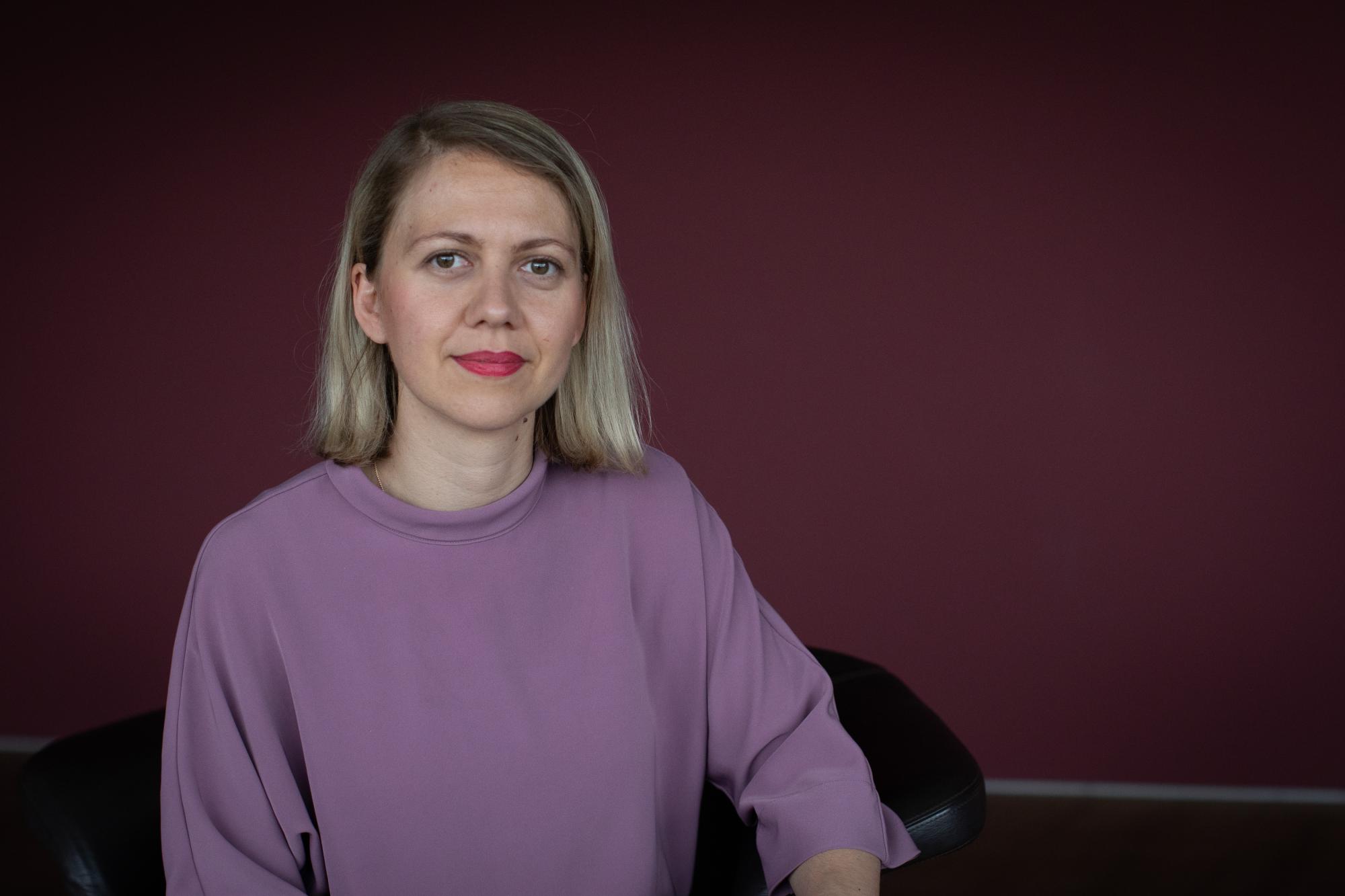
Artist(s):
-
KAYA MoreKAYA collaboratively traverse the boundaries between painting and sculpture, fusing both genres into an altogether new, hybrid artistic approach. Containers for a kind of inter-subjectivity that both retains and sublimates the artists’ individual hands, the works also offer a geologic logic, an organic history of their own making, as they preserve and pulverize or retool the former KAYA performance objects and ephemera into upcoming works, and re-use from KAYA’s past into a multiple, ever-becoming body. More recently, KAYA has moved beyond the figure of Kaya Serene and has become a collaborative platform that reaches beyond the artistic output of “Brätsch and Eilers” to incorporate the creative energies of the community that it builds around itself for each iteration of the project. Often times, this includes fellow artists, as well as students, curators, academics, and the institution that plays host to the many KAYA projects. KAYA is acting as a fictional and concrete body, conjoin formal, painterly, and metabolic procedures in their productions of identity. KAYA is a collaborative project established by painter Kerstin Brätsch (b. 1979, Hamburg, Germany) and sculptor Debo Eilers (b. 1974, Texas, USA) in 2010. They both live and work in New York City. Recent solo and group exhibitions include Marta Herford, Germany (2024); Museum Brandhorst, Munich, Germany (2023); Antenna Space, Shanghai, China (2023); Haus der Kunst, Munich, Germany (2018); Whitney Biennial, New York, USA (2017); Mumok Vienna, Austria (2016); KUB Kunsthaus Bregenz, Austria (2015); MWoods, Beijing, China (2015); 47 Canal, New York, USA (2013); Fridericianum, Kassel, Germany (2013).
-
Maria VMier MorePainting lies at the core of Maria VMier’s practice, evolving from writing gestures, from an intricate and idiosyncratic mark-making, to complex formations that seem to be constantly in motion. For MVM, painting is less a place of reification or expression, but a practice of research, experience and (un)learning. Maria VMier’s multidisciplinary practice encompasses context-specific and community-building work, as well as installations, artist books and objects. Central to their work is the notion of the body as a tool of knowledge, a site of political struggle and joy. Recurring themes are the conditions of artistic work, the dynamics of power and desire, institutions as malleable structures, nature, the invisible and the unknown. Maria VMier (b. 1985 in Passau, Germany) studied painting and sculpture at Bard College New York, the Munich Academy of Fine Arts and the Academy of Applied Arts in Vienna. They’ve had prominent presentations at MoMA PS1, Museum Brandhorst, and the Pinakothek der Moderne (all 2024), among others. Their practice is grounded in community and collaboration: they regularly invite further artists into their work, they run the artists’ book publisher Hammann von Mier-Verlag with Stefanie Hammann, and are also part of the collective Ruine München with Leo Heinik and Jan Erbelding.
-
Ari Pilhofer MoreAri Pilhofer (b. 1993, Amberg, Bavaria) is a London-based interdisciplinary artist working across painting, sculpture, performance, sound, ceramics, digital modelling and text. Their practice expands painting into a porous system that seeps into sculptures, gestures, installations, sound, and performance. Pilhofer’s work explores how social and class-based structures shape identity and aesthetic judgment. Drawing from queer theory, Bavarian folklore, German subcultures and personal mythology, they create fragmentary forms that reject resolution. A recurring figure called the Spider-Knight functions as a gender-resisting archetype, appearing in performance, sculpture, and image as a shifting vessel of protection and refusal. Their processes combine analogue and digital tools: painted surfaces are scanned, distorted, and rematerialised as ceramics, sculptural objects or garments. Through this, Pilhofer activates a form of techno-magic, transforming symbols into textures, images into bodies, and digital ghosts into tangible artefacts. Softness, repetition, and craft techniques, such as stitching, pouring, and layering, are used not for aesthetic decoration but as political gestures. Their work also reclaims occult, intuitive and so-called “irrational” knowledges (divination, mysticism, textile language) as serious modes of embodied research and resistance. Pilhofer’s practice has been presented at Galvani Galerie (Nuremberg, GER), Kurt-Kurt (Berlin, GER), Bayerisches Staatsministerium (Munich, GER), Warehouse X1 (Boston, Massachusetts, USA), and in collaborative performances with artist Simone Körner in Nuremberg and Chicago, Illinois (USA). They have taught workshops at the International Summer Academy in Salzburg and HFBK Hamburg, collaborating with artist Andrea Huyoff. They are part of the SOMA Summer Residency 2025 in Mexico City and are currently completing an MA in Painting at the Slade School of Fine Art in London, supported by a DAAD scholarship from 2024 to 2026.
Exhibition text
More
Hardly any other medium in art history has been so closely tied to the notion of individual authorship as painting. It is regarded as the paradigmatic form of creative subjectivity – a medium in direct physical connection with the producer: the brushstroke as signature of the body, the surface as psychological resonance space. This entanglement of action, materiality, and authorship is constitutive for the Western idea of the artistic genius.
The exhibition “And When I See a Ghost I Really See a Ghost” questions and decenters this notion. The artists on view do not treat painting as a self-contained object but as a relational field – a processual formation in which subjectivity, materiality, and space become unstable and permeable. Instead of unified authorship, what emerges is a fragmented, shared, at times indeterminate structure of artistic production. The artwork is no longer understood as the manifestation of an autonomous subject, but as an interface between economic, ethical, social, and aesthetic parameters.
The German term and concept of “position” here functions deliberately as a counter-model to the idea of a coherent artist-subject. It marks an attitude within a discursive field without essentializing it biographically or stylistically. The practices involved operate with an expanded form of painting that not only exceeds the boundaries of the canvas but also subverts institutional and medial conventions. The picture plane itself becomes a subject, extending into the exhibition space, while the artwork becomes a site of shared subjectivities.
These strategies do not only negotiate questions of aesthetic form but fundamentally address the status of the artwork in a present where production and reception can no longer be understood as separate, but rather as circular movements. Painting appears here not as an autonomous language but as a fluid structure within which authorship, materiality, and meaning are continually reconfigured.
For KAYA – a collaborative project founded in 2010 by Kerstin Brätsch and Debo Eilers, sometimes joined by the namesake Kaya Serene – painting is negotiated as an unstable, transmedial constellation. This configuration resists the idea of coherent artistic identity, instead developing an “anti-I” in which authorship is not represented but organized as a processual, fluid instance. KAYA does not operate from a subject but as a situational formation in which painting, body, and object enter into unstable relations, whereby the object itself assumes subject-status and is charged with experiences, social encounters, but also with violence. In the work SPREPPER_SCHNAKEN Table #1 (2015) – a dissecting-table-like display with body casts of Kaya and a painting on polyester foil strapped down with tension belts – the painterly gesture is brought into tension with the material presence of the body. The strapping of both painting and body, along with visible markings by coins, point to a radical visualization of capitalization processes: painting functions here not as a site of subjective self-expression, but as a vehicle of economic inscription – just as the body becomes a bearer of value attributions and part of circulating markets. Painting turns into a porous membrane between object, subject, and system.
For Maria VMier, too, painting is not a closed pictorial form but a relational formation – a complex of gesture, surface, texture, and body. Their works on folded paper destabilize the classical conception of the painting as a coherent surface. Instead, they fragment space and picture support into units of attention, dissolving both the centered, authoritative gaze and the idea of a singular artistic expression. Their practice articulates itself as a “companion-system” – a non-hierarchical interweaving of picture support and space, of producer(s) and viewer(s). In their work Das Ende des Kapitalismus [mit LJ Jeschke], VMier reflects on their own role as producer within the tension between artistic appropriation and economic embedding: instead of merely responding with a linguistic reference to the titular quotation from Lisa Jeschke’s text Alien / Care / Wall, VMier proposes a form of participation and visibility. Their painting not only formally resists the product logic of capitalist image production but also subverts its valorization logic – through processes of return, cooperation, and situational presence. The gesture is not erased, but becomes an identitarian part of the work itself.
Ari Pilhofer develops an expanded understanding of painting as an unstable system that unfolds across canvas, body, sculpture, and digital media. Their works operate with queer-coded, hybrid figures – masks, limbs, insect bodies, ritually charged shadow beings – that resist clear representation. Instead of producing a coherent image, Pilhofer creates transitions, blurrings, permeabilities. Often floating in their installation, their paintings appear as bodies – vulnerable, soft, multiple – while also serving as carriers of techno-symbolic transformation. Analog and digital processes intertwine: painted surfaces are scanned, altered, and translated into sculpture, ceramics, or clothing. These processes generate a techno-magical imagery in which symbols, surfaces, and bodies merge. Pilhofer understands softness, repetition, and craft – through sewing, casting, layering – not as ornamental gestures but as political strategies of resistance and recoding. The recurring archetype of the Spider-Knight functions as a fluid vessel of collective practices of protection and refusal. Their works undermine categorical divisions between subject and object, materiality and immateriality, generating a pictorial practice of re-ritualization in which digital and immaterial ghosts merge into tangible artifacts.
The exhibition title refers to the collaborative work Kollega (1993) by Franz West and Herbert Brandl. On the pedestal of the sculpture, they inscribed the sentence: “When I see a ghost, I really see a ghost” – a phrase attributed to the physicist and philosopher of science Ernst Mach. West was known for appropriating and incorporating theoretical discourses, less interested in systematic exegesis than in their subversive-associative reuse. The phrase itself seems emblematic of questioning stable concepts of identity: it negotiates visibility, projection, materiality, and the phantom-like nature of perception. In the context of the exhibition, it serves as a point of reference for an inquiry into painting as a processual, relational practice shaped by shifts in subjectivity.
Ernst Mach, known both as a physicist and as a pioneer of the philosophy of science, here functions – especially with his thesis on the illusion of the self – as a theoretical resonance space. In Mach’s thought, the self is not an ontologically secure instance but a fluctuating aggregate of sensory impressions, memories, and relations. Spirit and matter are not dichotomous entities in this model, but moments of a continuous flow of experience. It is precisely in this destabilization of the subject that the exhibition locates its critical potential: painting is not understood as an expression of individual depth, but as a site of fragmentation, mediality, and the negotation of authorship.

